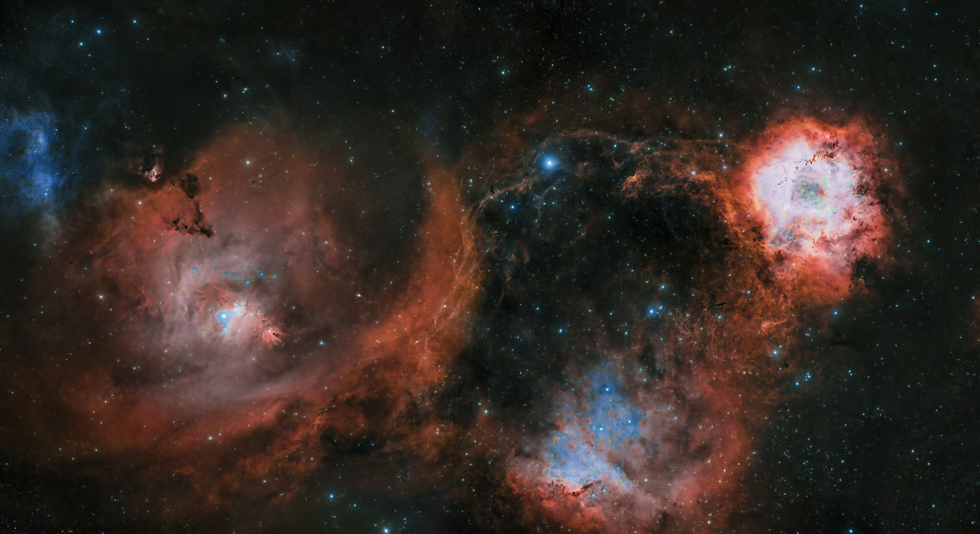Nebulosity in Monoceros: from Cone to Rosette Nebula
Nebulosity in Monoceros: from Cone to Rosette Nebula
This 2-panel mosaic shows two molecular clouds and emission nebulae in Monoceros, the Unicorn: NGC 2264 (Christmas Tree & Cone Nebula) on the left and NGC 2244 (Rosette Nebula) on the right.
The Cone Nebula is a famous H II region at an approximate distance of 2,700 light years from Earth and is located in the Orion Arm of the Milky Way. The nebula is part of the larger star forming region around the Christmas Tree Cluster. The two objects share the designation NGC 2264.
The Rosette Nebula is a vast brighter emission nebula located about 5,200 light years away. The star forming region lies near a large molecular cloud and is closely associated with the young open star cluster NGC 2244.
This widefield HSO-image is acquired with data from SPA-1 and SPA-3 (Takahashi FSQ-106ED refractor and FLI PL16803 camera). Includes data from 18 one-click obeservations.
Total integration time 870 minutes
SHO: 22 sub-frames of 600s with each narrowband filter for NGC 2244 and 14 sub-frames of 300s for NGC 2264
The Cone Nebula is a famous H II region at an approximate distance of 2,700 light years from Earth and is located in the Orion Arm of the Milky Way. The nebula is part of the larger star forming region around the Christmas Tree Cluster. The two objects share the designation NGC 2264.
The Rosette Nebula is a vast brighter emission nebula located about 5,200 light years away. The star forming region lies near a large molecular cloud and is closely associated with the young open star cluster NGC 2244.
This widefield HSO-image is acquired with data from SPA-1 and SPA-3 (Takahashi FSQ-106ED refractor and FLI PL16803 camera). Includes data from 18 one-click obeservations.
Total integration time 870 minutes
SHO: 22 sub-frames of 600s with each narrowband filter for NGC 2244 and 14 sub-frames of 300s for NGC 2264
SPECIFICATIONS
Telescope
SPA1 Takahashi FSQ-106ED
Camera
FLI PL16803
Location
IC Astronomy Observatory, Oria, Spain
Date of observation
2021-2022 (last observation of NGC 2244 on 30/10/2022)
Filters
HSO
Processing
AstroPixelProcessor, Photoshop CC with AstroPanel Pro, Astronomy Tools, Topaz Sharpen AI and NoiseXTerminator plug-ins
Credits
One-click observations TL


